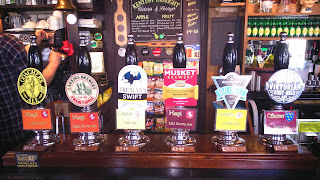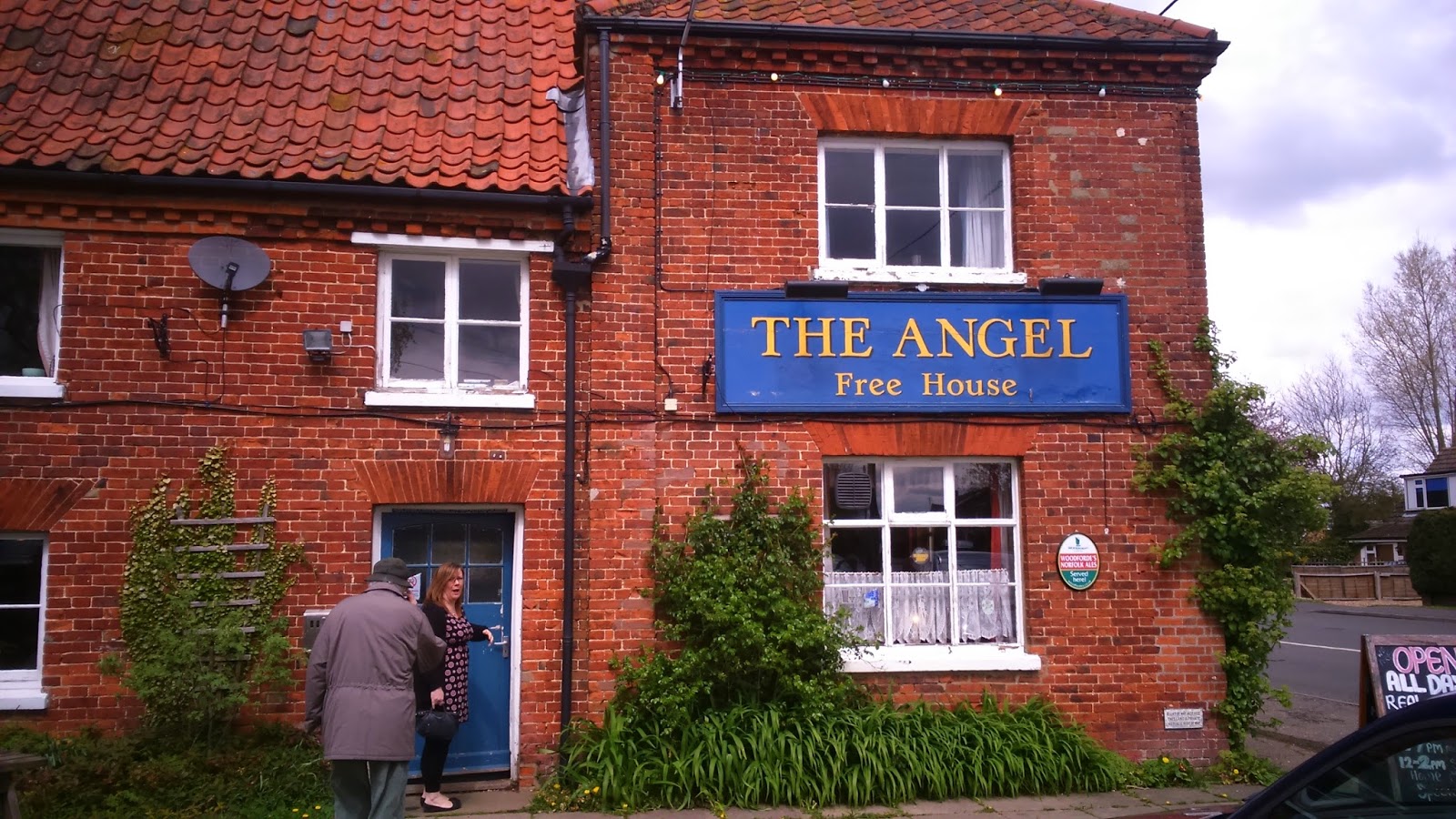Three weeks after my walk through the bluebell woods to the
Dovecote at Capel, I was fortunate to go on another pub walk and this time the
bluebells were, if anything, even more spectacular.
This walk was to the award-winning Windmill, at Sevenoaks
Weald; a real gem of a village pub and a true community local. The occasion was
to present licensees Matthew and Emma with their certificate for winning the
West Kent CAMRA Pub of the Year 2015. This worthy award follows on from their
success in the same competition last year. The couple then went on to win Kent
Pub of the Year 2014 followed by Finalist in the National CAMRA Pub of the
Year 2014 competition.
 |
| The Windmill at Weald - our destination |
The three of us caught the train, one stop from Tonbridge to
Hildenborough station, from where we headed off up the hill before crossing
into Philpotts Lane. My
friend Don was leading the walk, as he had walked this way several times
before. After a short distance the road crosses the busy A21
Tonbridge-Sevenoaks By-Pass, by means of a bridge, and soon after afterwards we
turned off to the right and headed off in a north-westerly direction.
 |
| More bluebells |
After skirting the local golf course, we reached a track which took us past a couple of isolated cottages, before descending through some thicker woodland (and more bluebells), towards railway line. We crossed under the tracks by means of a narrow pedestrian underpass. This was the only wet and muddy spot on the entire walk. We then crossed a couple more fields, divided by a stream, before coming out onto a narrow lane. After passing a riding stables, and a farm, we reached a T-Junction, and turned right into the strangely named Scabharbour Road towards our destination of Sevenoaks Weald. I was back in familiar territory now, as I know this road quite well. Some fifteen minutes later we arrived at the Windmill keen to see which beers were on offer in order to slake our thirst.

That first, much anticipated pint is always even more
eagerly awaited by the time one reaches the end of a long country walk, and
this pint was no exception. As is always the case at the Windmill, there was an
excellent selection of beers on sale, including local offerings in the form of
Goacher’s Light, Larkins Traditional, Musket Muzzleloader and Dark Star
Victorian Ruby Mild, plus Redemption Big Chief and Truman’s Swift from slightly
further a field. I opted for the latter to begin with; an excellent gold
coloured pale ale, well-hopped with some thirst-quenching citrus flavours.
The pub was surprisingly empty for a Sunday afternoon, but
the barman told us it had been busy with diners earlier. Being the first fine
warm day for some time we decided to sit out in the suntrap of a garden at the
side of the pub. Here we met up with the other members of our party. A second
pint was called for, and this time I went for an old favourite, in the form of
Goacher’s Fine Light. It didn’t have quite as much hop character as the
Truman’s, but it was still a very good beer.
 |
| The excellent beer selection |
Shortly after 4pm, we were joined by the Windmill’s licensees, Matthew and Emma. After a few pleasantries, Don presented the couple with their well-deserved certificate for West Kent CAMRA Pub of the Year. We stayed out in the garden chatting to Matthew and Emma whilst enjoying the pleasant warm afternoon sunshine. I also enjoyed a further two beers; Redemption Big Chief, a 5.5% well-hopped Golden Ale, followed by the chewy dark malt of the 6.4% Dark Star Victorian Ruby Mild.
 |
| Worthy winners, Emma & Matthew |
The walk back from the pub though had been worth us missing
the train, as although we stuck to the lanes, we passed some really impressive
and, at times, quite stunning multi-million pound properties, all tucked away down the intriguingly named Egg
Pie Lane, which leads down from Scabharbour Road to Philpotts Lane. There is
certainly some money tucked away in this part of the county.
Missing the train meant an hour’s wait for the next one.
There used to be a pub, called the Gate, just down the hill from the station,
but this was converted, years ago, into an eatery. After various incarnations,
the pub is now a rather good Indian Restaurant. Eric, who was walking with us,
took the opportunity to call in for a curry, but Don and I, decided to catch
the up-train to Sevenoaks, where we knew we could get a fast train back down to
Tonbridge.
I arrived home slightly later than anticipated, but there
was a welcoming pot of beef stew waiting for me in the slow-cooker; courtesy of
my lovely wife. I was rather hungry following the walk, but fortunately there
was sufficient stew for a second helping.
Once again the enjoyment of a gentle ramble through the
unspoilt Kent
countryside, coupled with the excellence of an award-winning village pub, had
proved an irresistible combination. I am looking forward to further such
delights as the summer unfolds.





























